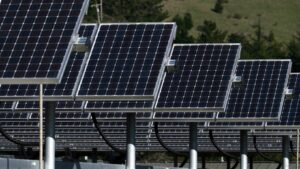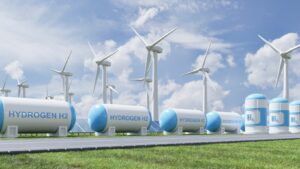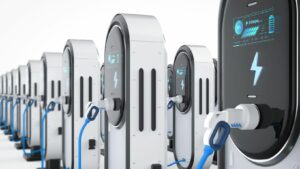In an era where environmental concerns are at the forefront, clean tech stands as a beacon of hope. It’s a rapidly evolving field that promises to revolutionize how we produce and consume energy, aiming to reduce the carbon footprint and mitigate climate change. As global awareness grows, the demand for sustainable solutions is driving innovation and investment in clean technologies.
Embracing clean tech is crucial for a sustainable future. By investing in these technologies, societies can transition to greener practices, ensuring a healthier planet for future generations. The journey towards a cleaner, more sustainable world is underway, and clean tech is leading the charge.
Clean Tech Environmental

Clean tech environmental refers to the practices and innovations focused on minimizing environmental impact through sustainable technology. It encompasses a wide range of solutions aimed at reducing pollution, conserving resources, and promoting energy efficiency. Renewable energy technologies, like solar panels and wind turbines, exemplify clean tech environmental efforts by generating power without emitting greenhouse gases. In addition, energy-efficient appliances and electric vehicles play a significant role in lowering carbon footprints and enhancing environmental sustainability. The adoption of clean tech environmental solutions also drives economic growth by creating green jobs and fostering innovation in various industries. As awareness of climate change grows, clean tech environmental strategies become increasingly vital for supporting a healthier planet and ensuring a sustainable future.
Key Technologies in Clean Tech Environmental

Clean tech environmental innovations include solar power, wind energy, and electric vehicles. Millions of solar panels offer an abundant renewable energy source by converting sunlight into electricity efficiently. Wind turbines harness wind energy, optimizing clean tech environmental impact by generating electricity without emissions. Electric vehicles replace fossil fuel dependency, reducing pollution and supporting clean tech environmental goals. Smart grids enhance energy efficiency, enabling real-time monitoring and management of energy consumption. Energy storage solutions, such as advanced batteries, support clean tech environmental objectives by storing solar and wind energy for later use, allowing consistent clean power availability. Carbon capture technology assists in clean tech environmental strategies by capturing and storing carbon dioxide emissions from industrial processes. Together, these key technologies drive clean tech environmental progress by promoting renewable energy generation and reducing carbon footprints.
Benefits of Clean Tech Environmental

Clean tech environmental solutions offer significant advantages for both the planet and the economy. By reducing greenhouse gas emissions through renewable energy sources like solar panels and wind turbines, these technologies contribute to a cleaner atmosphere and mitigate climate change impacts. Energy-efficient innovations, such as LED lighting and smart home systems, help conserve resources and lower utility costs for consumers, further promoting widespread adoption.
Economic growth stems from clean tech environmental advancements, as they create new industries and generate jobs in sectors like renewable energy installation, maintenance, and manufacturing. Governments and businesses investing in these technologies often experience enhanced energy security and reduced dependence on fossil fuels, fostering resilience against global energy market fluctuations.
Public health benefits emerge from clean tech environmental practices as well. By minimizing air and water pollution, these technologies improve overall human well-being and reduce healthcare costs related to pollution-induced illnesses. The transition to a clean tech environmental model supports a sustainable future and ensures a healthier environment for present and future generations.
Challenges and Limitations
While clean tech environmental solutions offer promising benefits they also face challenges and limitations. High initial costs can deter widespread adoption as many technologies require significant investment before realizing long-term savings. Additionally integrating renewable energy sources into existing infrastructure presents technical and logistical hurdles. Intermittency issues with solar and wind energy require advancements in energy storage to ensure reliability. Regulatory barriers and lack of incentives can slow progress as policies often lag behind technological advancements. Despite these obstacles the potential for clean tech to revolutionize the environmental landscape remains strong. Continued innovation and collaboration between governments industries and communities will be crucial in overcoming these challenges and unlocking the full potential of clean tech environmental solutions.